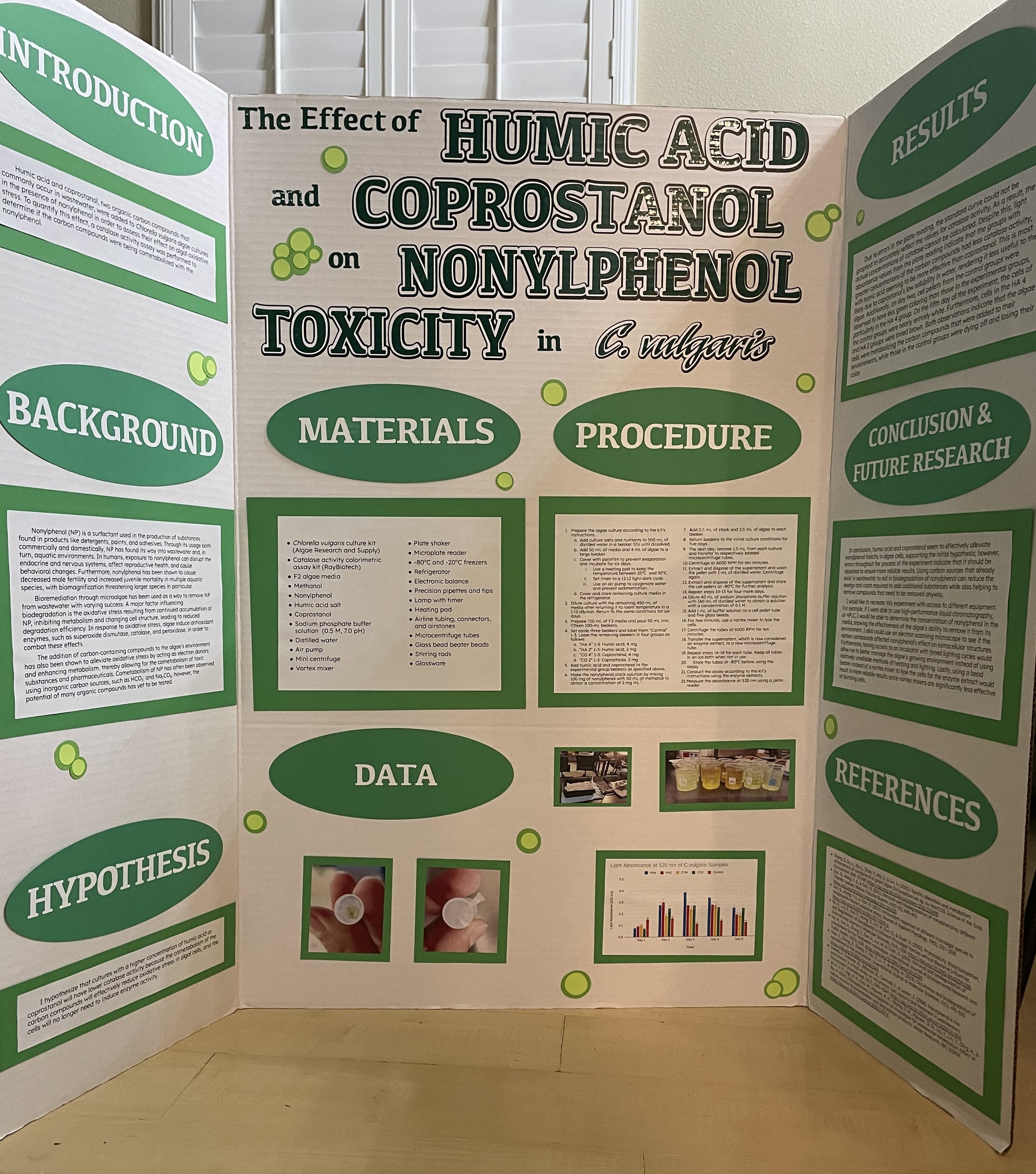The Effect of Humic Acid and Coprostanol on Nonylphenol Toxicity in C. vulgaris
By Taylor Nguyen | Valley Christian High School, San Jose, California, United States
I. Abstract
Through its usage both commercially and domestically, nonylphenol has found its way into wastewater and aquatic environments. In humans, exposure to nonylphenol can disrupt the reproductive, endocrine, and nervous systems. Furthermore, nonylphenol has been shown to cause reproductive abnormalities in multiple aquatic species. Bioremediation through microalgae has been used to remove nonylphenol from wastewater with varying success. A major factor influencing biodegradation is the oxidative stress resulting from continued accumulation of nonylphenol, inhibiting metabolism and changing cell structure, which, in turn, leads to reduced degradation efficiency. The addition of inorganic carbon-containing compounds to algae’s environment has been shown to alleviate oxidative stress, allowing for the cometabolism of toxic substances. In response to oxidative stress, algae induce antioxidant enzymes, including catalase. Introducing humic acid and coprostanol, two organic carbon compounds that frequently occur in wastewater, should allow for greater resistance to nonylphenol. A catalase activity assay showed that groups with greater concentrations of the carbon compounds had less catalase activity, with humic acid seeming to be more effective than coprostanol. Furthermore, observations of color changes in the cells indicate that cells in the experimental groups were growing more than the control groups. The effectiveness of the addition of carbon compounds points to practical applications in wastewater treatment plants. Using carbon sources that already exist in wastewater to aid in biodegradation of nonylphenol can reduce the energy and costs required to add additional substances while also helping to remove compounds that need to be removed anyway.
II. Research Poster
The research poster published, “The Effect of Humic Acid and Coprostanol on Nonylphenol Toxicity in C. vulgaris,” was received on March 19, 2024, and was reviewed and accepted on June 8, 2024. To contact editors and reviewers please click here.
